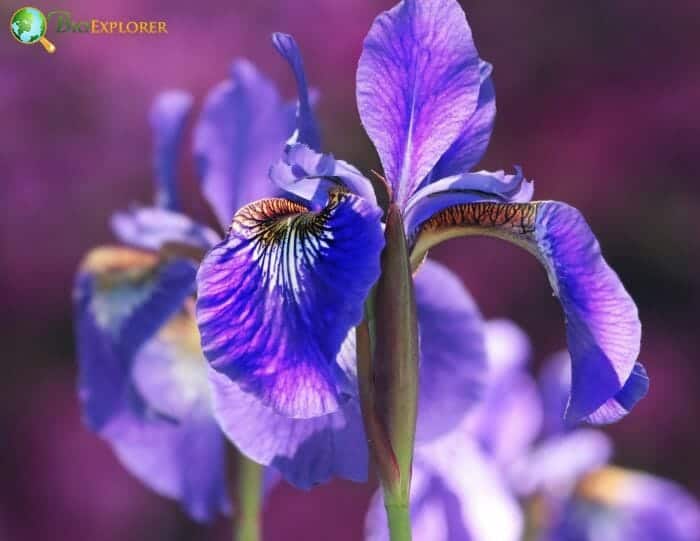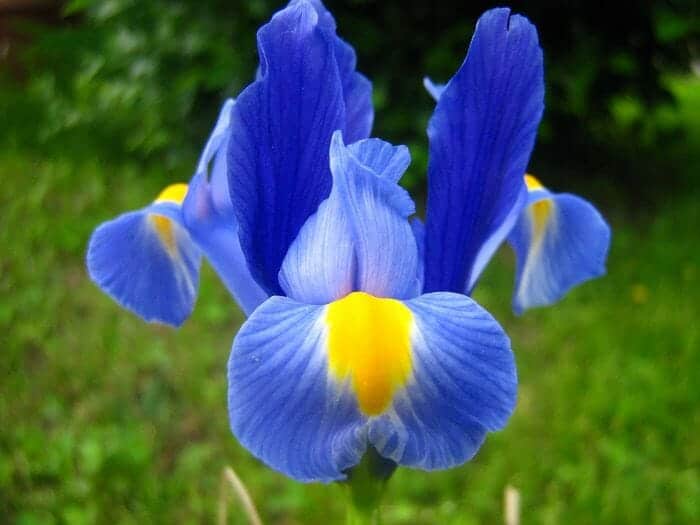
The beautiful and tall iris, named after the Greek goddess who rode the rainbow, is available in several magical colors. Notwithstanding its divine origins, this late bloomer is reliable, hardy, and easy to grow.

The scientific name for the iris flower is Iris spp. Iris is among the most abundant flowering plant genera in the family Iridaceae. Currently, more or less than 300 species[1] of the genus Iris are known.

Almost all species are found in temperate zones of the northern hemisphere, from Asia to Europe and North America. Other common names for this popular ornamental plant are junos and flags.

This evergreen shrub grows from rhizomes and can grow 2 to 3 feet tall. The characteristic six-petalled flowers have three hanging outer petals (known as “falls“) and three erect inner petals (known as “standard“). Iris flowers are brown, blue, purple, pink, orange, yellow, lavender, and white.

The leaves are usually sword-shaped, large, and narrow. Irises can be crested or bearded. Bearded irises are so named because they have fine hairs that run along the center.
In the case of the crested irises, the hair forms a ridge or comb. Most irises bloom in early summer.










